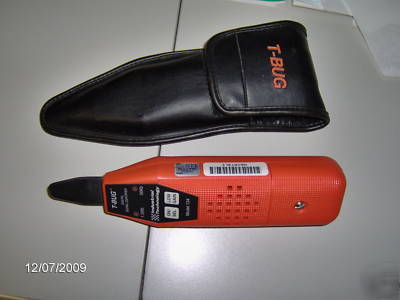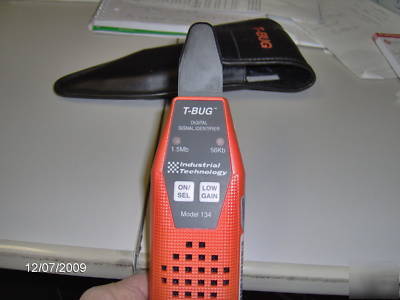Tristate Machinery Dismantlers Forum > INDIANA
> Machine Parts
> Used
> With Warranty
> Industrial technology t-bug digital signal identifier
Industrial technology t-bug digital signal identifier
Used T-Bug Industrial Technology Model 134 Digital Signal Identifier
Locate circuits carrying digital signals.
The T-Bug is simple to operate and constructed for rugged field use. Operation is non-intrusive and does not involve metallic contact so working digital circuits can be identified without risk of service interruption.
Use in the Field or Central Office
The T-Bug can be used either in the field, Central Office or other locations by technicians in OSP construction, maintenance, or special services during operations such as cable transfers, section replacements and cable testing. It can be used at the main frame, in a splice, pedestal, cross-connect box, or remote terminal.
The T-Bug will detect digital signals in several frequency bands. including T1, HDSL and 56KB. See Specifications for bit rates detected.
Listen to the Actual Bit Stream
The T-Bug provides both an audible and visible indication when digital signals are present on a cable pair. The visible indicator is the red LED which brightens in proportion to the signal strength encountered. The audible indicator is the sound of the actual digital signals being transmitted on the pair which are reduced to audible range through the T-Bug s unique heterodyne receiver. By listening to the actual bit stream on the pair, a technician can detect the type of signal present.
Another feature unique to the T-Bug is its differential probe. This allows a technician to determine whether the digital signals detected are truly present on a pair, or merely induced signals from adjacent pairs. When the T-Bug probe tip is placed between the ring and tip (A and B) of the pair, metallic signals between the ring and tip are enhanced while induced common mode signals are cancelled out. In addition, false readings due to noise are virtually eliminated.
The ON/SEL pushbutton turns the unit on for approximately 200 seconds and automatically checks the battery. When turned on, the T-Bug will tick once per second. The tick tells the user the T-Bug is on and also serves as a continuous self-test, assuring the user that the unit is functioning properly.



